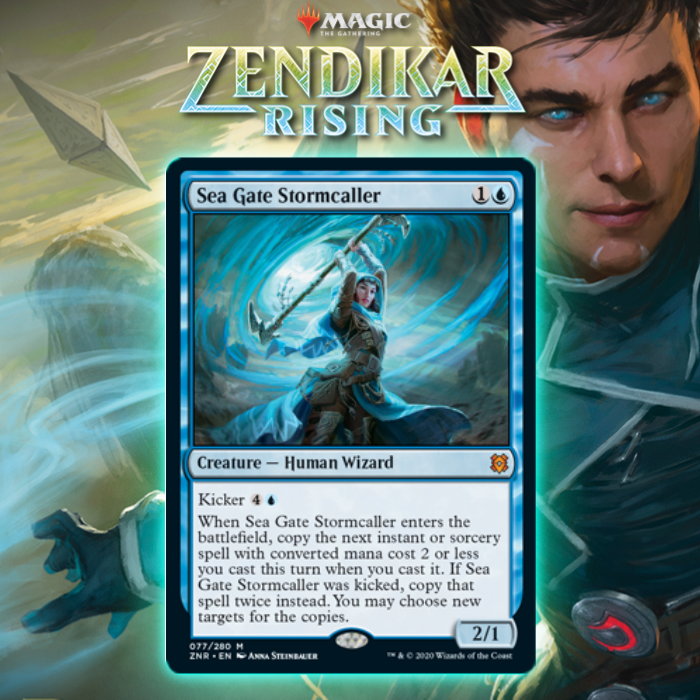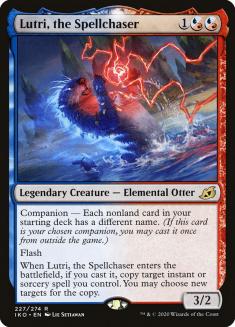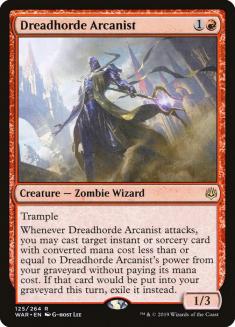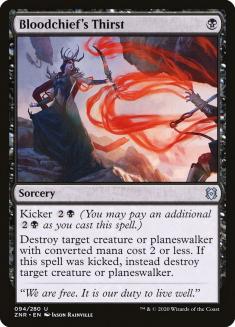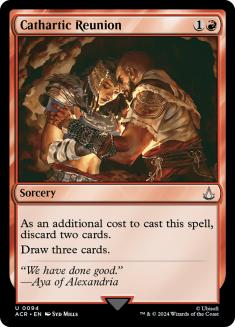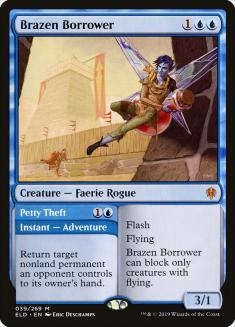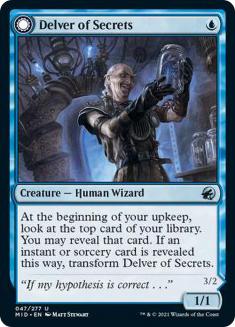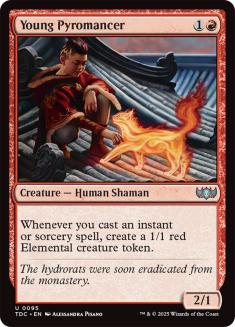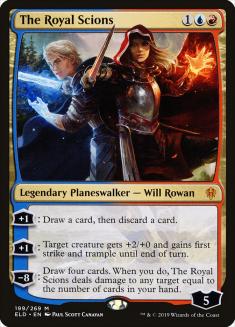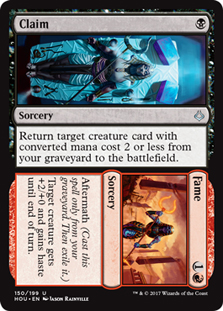Sea Gate Stormcaller is the best card in Zendikar Rising and a multi-format all-star.
Sea Gate Stormcaller is unplayable trash that can be donated freely to local Commander players.
It will take time and effort to figure out exactly what Sea Gate Stormcaller is. I can tell you right now what it isn’t:
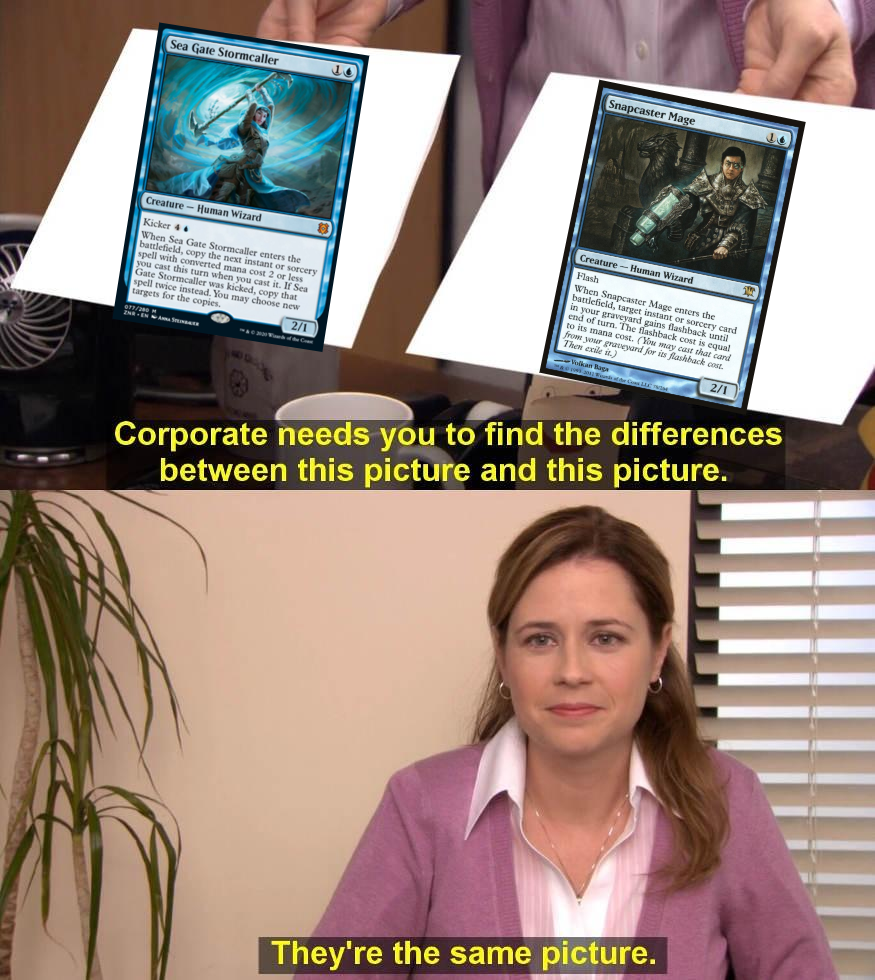
This is just the most recent and glaring example of a trend that afflicts every preview season: framing something new through lazy pattern-matching with cards that are superficially similar but completely different. For a new player who lacks any historical context for Snapcaster Mage, how does this comparison help? For an experienced player who can make an informed comparison, why not use that understanding to evaluate the card from first principles and avoid the risks of pitting apples against oranges?
If these comparisons are pointless in general, this one is especially aggravating. Sea Gate Stormcaller will arrive in formats where Snapcaster Mage isn’t an option — Frantic Inventory is no Ancestral Recall, but it doesn’t have to be. Snapcaster Mage stands tall as one of the best creatures and best cards ever printed, appearing in all-time Top X rankings after a quarter of a century. Even if Stormcaller were a strictly worse Snapcaster, there’s a lot of room for a worse Snapcaster Mage to flourish and no shame in being one.
A moment’s thought about the play patterns of Sea Gate Stormcaller suggests it’s really more of a Dualcaster Mage than a Snapcaster Mage:
A gimmick as a companion and a dud as a regular card, Lutri’s brief tenure in Constructed is a discouraging sign for Sea Gate Stormcaller — if that’s the most apt comparison.
Other cheap creatures that recur spells have found more success in quite different roles:
Both of these cards have made their mark all across Constructed but not in a way you could easily predict by lining them up against Snapcaster Mage. The Snapcaster comparison may be weak but reframing it as a contrast can help us find a role for Sea Gate Stormcaller:
1. Sea Gate Stormcaller is wholly proactive; Snapcaster Mage is both reactive and proactive. It’s hard to overstate how much of Snapcaster Mage’s power is tied up in the flash ability – not just giving it access to explicitly reactive cards like counters but allowing a control deck to pass the turn with the expectation of not wasting its mana and making the opponent play around various possible holdings (with Snapcaster Mage adding whole boughs to that decision tree). Sea Gate Stormcaller forces a sorcery-speed commitment that gives the opponent the first chance to regain the initiative and more information about how to do that.
A more subtle strength of Snapcaster Mage is how effectively it lets a reactive strategy pivot to a proactive one. End-step Lightning Bolt followed by Snapcaster Mage for Lightning Bolt on the following turn was a common play pattern in Jeskai or base-Izzet control decks in Modern that let them apply pressure against combo or ramp decks without ever taking the shields down. This flexibility made Snapcaster Mage a fixture of Splinter Twin, whose seamless shifts in role assignment made it the dominant deck of its time.
Every Stormcaller deck could probably be a Snapcaster deck; there are many Snapcaster decks that wouldn’t touch Stormcaller.
2. Sea Gate Stormcaller is conditionally cheaper but at a cost. On top of the explicit converted mana cost restriction, Sea Gate Stormcaller needs you to hold your payoff spell until both are castable together. This is easier said than done in general and matters a lot with the kind of cheap cards you often most want to copy. Part of what makes Snapcaster Mage so deadly with Lightning Bolt or Fatal Push in Modern is that you can cast that removal spell early to buy time for Snapcaster. Sea Gate Stormcaller can stabilize the game in the same way, but only if you can survive that long without Lightning Bolt’s help. My first Thoughtseize slows the opponent down and lets me know if it’s even worth casting the second Thoughtseize yet, not something I can know in advance with Sea Gate Stormcaller.
This becomes a benefit if you don’t really want to cast that card early anyway — if your first turns are mostly scripted with other plays, for example, or the card isn’t worth the sticker price outside this context. I’m not excited to cast Forbidden Friendship — or cast it twice — if this were Snapcaster Mage. But Stormcaller into Forbidden Friendship yielding five creatures for four mana piques my interest. I don’t want to put otherwise below-par cards in my deck just to boost them up with Stormcaller but this may help role-players that are necessary for a strategy but hard to justify on rate alone.
3. Kicker is a stretch goal. Many discussions of this card have focused on how poorly a kicked Sea Gate Stormcaller squares up to the late-game hits of recent Standard — a gigantic Hydroid Krasis or Ugin, the Spirit Dragon. This is a classic case of additive distraction; the card would look stronger to those people if the kicker line was deleted altogether. If asked whether the card is better or worse without an extra ability, they would pass the test, but its mere presence on the card draws attention away from what matters. Sea Gate Stormcaller is a Grizzly Bear, not a Kavu Titan.
4. Sea Gate Stormcaller loves additional or optional costs. If kicker is a distraction on Sea Gate Stormcaller, it’s the perfect partner for Sea Gate Stormcaller. While most pseudo-flashback effects demand the full price twice to double up a kicked Bloodchief’s Thirst or Into the Roil, Sea Gate Stormcaller already accounts for that.
5. Sea Gate Stormcaller also checks for ‘fake’ instants or sorceries that begin as another card type. This would be a technical footnote in most formats but the Adventure creatures are automatic considerations for decks in their colours, work well with Sea Gate Stormcaller, and have a special use in decks that are likely homes for Stormcaller; they need a high density of instants or sorceries as well as enough threats to power through removal spells, making anything that acts as both invaluable.
6. Sea Gate Stormcaller has unique functionality compared to cards competing for the same slots. The comparisons to Snapcaster Mage — once the next Recoup! — may be a symptom of a larger problem but the previous point highlights a use for them. In larger formats, these spell-heavy proactive decks get to choose from more threats than they can possibly include at once. These threats work well together but need a baseline number of noncreature spells to operate at all.
When Grixis Delver was in a tier of its own in Legacy, a common failure mode for the deck was being stuck with a Delver of Secrets showing a Young Pyromancer that had no friends or a Gurmag Angler starving in an empty graveyard; however, a major strength of the deck was that these threats didn’t get in each other’s way when they did have fuel. Delver flipped from spells that would pass through the Pyromancer’s hands before feeding the Angler.
7. By contrast, some pretenders to Snapcaster Mage’s throne directly compete with each other. If I have access to Snapcaster Mage; Dreadhorde Arcanist; and Jace, Vryn’s Prodigy, each Thought Scour or Lightning Bolt I draw can only be reused by one of them. There are steep diminishing returns on effects that fight over the same cards — even if Snapcaster Mage is ‘better’ than Sea Gate Stormcaller overall, the first or second Stormcaller may edge out the hypothetical fifth Snapcaster or the actual first Jace, Vryn’s Prodigy.
This context is important for finding the right mix of threats for these shells to function. If Sea Gate Stormcaller, or any of the others, underperforms at first, it may not be responsible.
With all this in mind, where should we expect to see Stormcaller?
Five-set Standard with Zendikar Rising will have a lower bar for any card to earn its stripes but fewer tools to clear it with. Izzet Aggro decks hovered on the fringes of Core Set 2021 Standard but were routinely outmuscled by Sultai Ramp. Can they compete with Uro, Titan of Nature’s Wrath in this exciting new world?
Creatures (15)
Planeswalkers (2)
Lands (21)
Spells (22)

Here, Sea Gate Stormcaller mostly aims to become the best Elvish Visionary it can be but can combine with Infuriate for sudden kills with any of the larger threats.
Somehow not even close to being the best three-mana planeswalker in its own set, The Royal Scions is an excellent card that I hope will have a chance to show its full potential. Though its more obvious use is as a way to push powerful attackers over the finish line, the ‘drawing extra cards’ theme from its set offers a home for it and possibly for Sea Gate Stormcaller:
Creatures (14)
- 3 Irencrag Pyromancer
- 4 Uro, Titan of Nature's Wrath
- 4 Jolrael, Mwonvuli Recluse
- 3 Sea Gate Stormcaller
Planeswalkers (2)
Lands (24)
Spells (20)

In larger formats, we find cheap spells that we’re far more excited to copy with Sea Gate Stormcaller:
Creatures (8)
Planeswalkers (2)
Lands (25)
Spells (25)

The cheap black interaction that defines Pioneer is a natural pairing for Sea Gate Stormcaller. At least one of Thoughtseize or Fatal Push is guaranteed to be strong against your opponent and many decks hate to see both. Doubling down on either or both of those is a recipe for success.
The Rakdos Pyromancer decks in Historic and Pioneer have done this with Dreadhorde Arcanist alongside Young Pyromancer, both less demanding than Thing in the Ice as your main threat. These decks also aim to unlock the full potential of Village Rites, which has the air of a Legacy-era card that found itself in a core set. Village Rites is the perfect card to copy with a Stormcaller, which can offer itself up as as a sacrifice:
Creatures (19)
- 3 Young Pyromancer
- 4 Stitcher's Supplier
- 4 Dreadhorde Arcanist
- 4 Archfiend's Vessel
- 4 Sea Gate Stormcaller
Lands (21)
Spells (20)
- 4 Thoughtseize
- 3 Collateral Damage
- 4 Claim
- 1 Call of the Death-Dweller
- 4 Village Rites
- 4 Bloodchief's Thirst
Sideboard

Sea Gate Stormcaller teams up with Dreadhorde Arcanist for ridiculous sequences that make Rakdos Pyromancer look like a Standard deck by comparison. The blue splash opens other doors, too — where Rakdos Pyromancer went to absurd lengths to beat hard hate like Rest in Peace or Grafdigger’s Cage, going as far as to disable Lurrus by sideboarding expensive non-graveyard threats like Rankle, Master of Pranks or Hazoret the Fervent, Grixis Pyromancer gets to run Sprite Dragon as a fast and efficient clock.
Claim // Fame returns Sea Gate Stormcaller at a discount to set up another spell but can also be copied to start some absurd chains:
- With Stitcher’s Supplier and Dreadhorde Arcanist on the battlefield, cast Stormcaller. Cast and copy Collateral Damage, sacrificing Stitcher’s Supplier and removing two blockers. Attack with Arcanist, recasting a card milled by Supplier.
- On an empty battlefield, cast Call of the Death-Dweller returning Stormcaller and Archfiend’s Vessel. Vessel triggers, creating a 5/5. Cast Village Rites, sacrificing the Stormcaller that copied it, drawing four cards.
We can do this bigger and better in Modern with the help of — who else? —
Snapcaster Mage:
Creatures (12)
Lands (21)
Spells (27)
- 4 Lightning Bolt
- 2 Unearth
- 4 Opt
- 4 Mishra's Bauble
- 2 Thoughtseize
- 4 Inquisition of Kozilek
- 4 Thought Scour
- 1 Kolaghan's Command
- 2 Fatal Push
Sideboard

Consider a typical mid-game sequence after both players have traded resources: I cast Sea Gate Stormcaller and then copy Unearth, returning a second Stormcaller and Snapcaster Mage. Snapcaster Mage flashbacks Fatal Push, which Stormcaller copies. Lightning Bolt is a crucial addition here, working with both 2/1 Wizards to present formidable reach after your first threat is removed.
Delver of Secrets has never gained much traction in Modern but a shell like this — Grixis Delver in all but name — fields the same combination of pressure and disruption that has made Delver a staple of other formats.
Sea Gate Stormcaller gets better the stronger the cheaper instants and sorceries are, which makes it an appealing prospect for Magic’s truly historic formats. Dreadhorde Arcanist has cemented itself as a staple of Legacy, getting even more mileage from every Brainstorm and Ponder, and those high hopes transfer over here. An older fan favourite in Cabal Therapy is a match made in heaven with Stormcaller, shredding the opponent’s hand with three copies of Therapy — an educated guess, a targeted missile, and the final nail in the coffin.
If this isn’t rich enough for your blood, Ancestral Recall and Time Walk sound like fine targets for a Sea Gate Stormcaller. Vintage is vibrant on Magic Online if you want to try before you buy!

